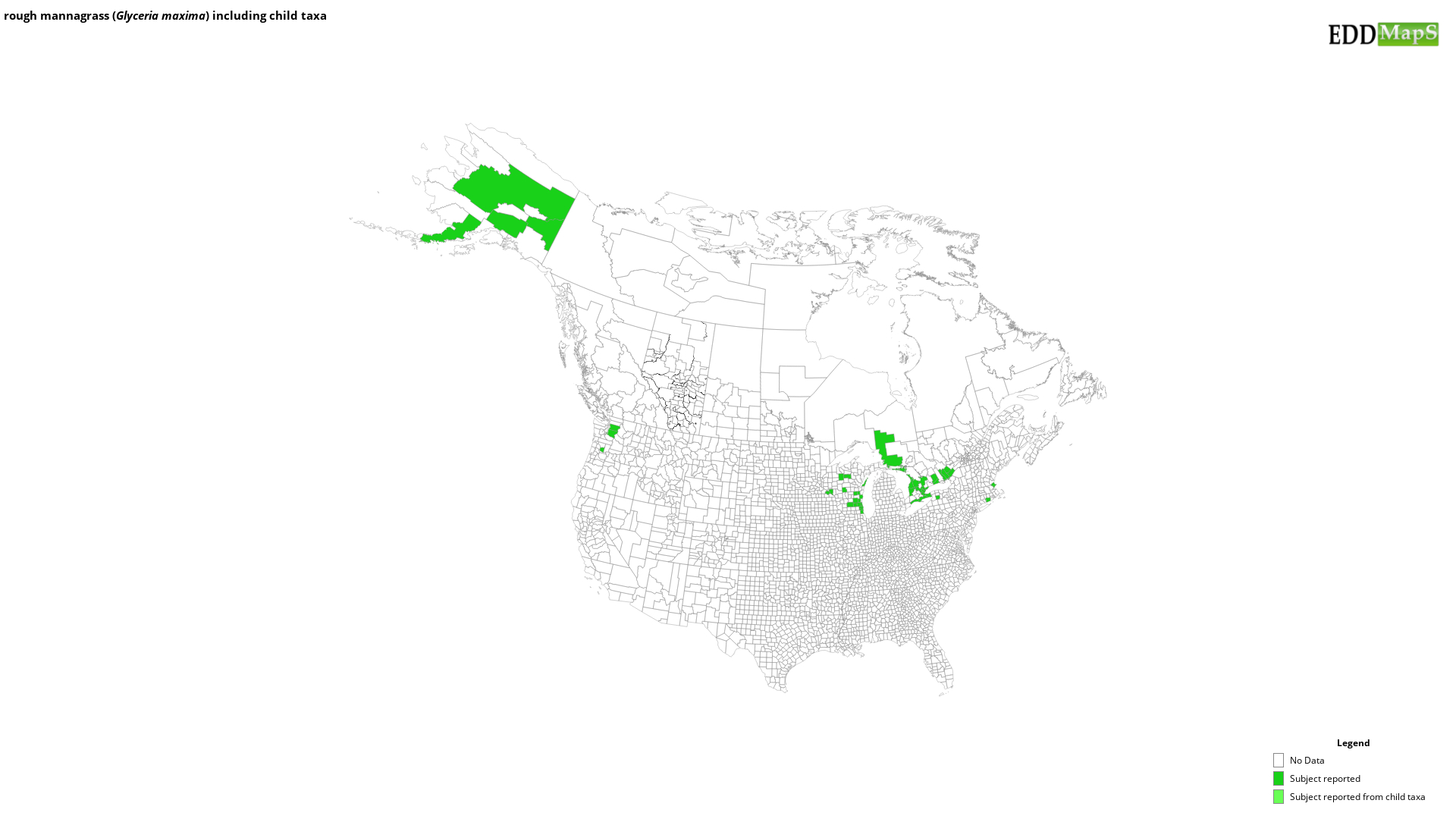rough mannagrass
Glyceria maxima (Hartman) Holmb.
Overview
- Appearance
- Glyceria maxima is a perennial, semi-aquatic, rhizomatous grass. Stems are unbranched and can reach 2-8.2 ft. (0.6-2.5 m) in height.
- Foliage
- Leaves are 12-23.6 in. (30-60 cm) long, 0.2-0.8 in. (6-20 mm) wide, with an acute apex and a prominent midrib. The leaf margins have stiff, short hairs. The leaf sheaths are rough in texture with a reddish-brown band at the leaf junction.
- Flowers
- Flowering occurs from June through August, when flowers appear in 6-12 in. (15-30 cm) long open panicles. The panicle branches have short, stiff hairs like those on the leaf margins.
- Fruit
- The small seeds are 0.06-0.08 in. (1.5-2 mm) long, obovoid in shape and smooth in texture. This plant reproduces primarily vegetatively through rhizomes.
- Ecological Threat
- Glyceria maxima occurs in sunny to semi-shady wetlands, where it can form dense impenetrable monocultures that crowd out native species. It is native to northern Eurasia and was first found in North America in 1940 on the edge of Lake Ontario.
Selected Images
Maps
EDDMapS Distribution - This map is incomplete and is based only on current site and county level reports made by experts, herbaria, and literature. For more information, visit www.eddmaps.org
State List - This map identifies those states that list this species on their invasive species list or law. For more information, visit Invasive.org
Invasive Listing Sources
- Connecticut Invasive Plant List
- Connecticut Invasive Plant Working Group
- Connecticut Noxious Weeds
- Maryland Aquatic Nuisance Species Plan
- Massachusetts Invasive Plants Advisory Group List
- Massachusetts Noxious Weeds
- Massachusetts Prohibited Plant List
- New Hampshire Prohibited Aquatic Species
- New Hampshire Prohibited Invasive Species
- New York Regulated and Prohibited Invasive Species - Regulated
- Ontario’s Invading Species Awareness Program Tracked Species List
- Pacific Northwest Exotic Pest Plant Council, 1998
- Rhode Island Natural History Survey
- To be proposed for MISC
- Washington Noxious Weeds
- Wisconsin's Invasive species rule – NR 40
Taxonomic Rank
| Kingdom: Plantae |
| Phylum: Magnoliophyta |
| Class: Liliopsida |
| Subclass: Commelinidae |
| Order: Cyperales |
| Family: Poaceae |
| Genus: Glyceria |
| Subject: Glyceria maxima (Hartman) Holmb. |

